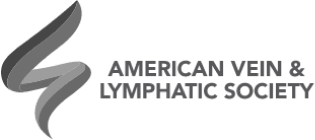















Chuback Vein Center - Posted on October 5, 2023
At Chuback Vein Center, your health and well-being are our top priority. This is the second in a series of articles about vein disease and keeping your legs healthy.
In this edition, I’d like to discuss a more common complication of varicose veins: superficial thrombophlebitis, also called superficial phlebitis or sometimes just phlebitis.
What is Phlebitis?
Phlebitis is a blood clot in a superficial vein or varicose vein that becomes inflamed, red, and tender. While it is generally self-limited, phlebitis can become a serious problem if it is not recognized and treated promptly. Left untreated, superficial blood clots can extend into the deep veins and become deep vein thrombosis (DVT), which can put you at risk of pulmonary embolism (PE), a life-threatening blood clot that travels to the lungs.
Why does Phlebitis occur?
When you have venous insufficiency or varicose veins, blood pools in the legs and moves more slowly, this is called venous stasis. If you injure your leg (for example, if you bump into an end table or bed frame), it creates inflammation. This combination of inflammation and venous stasis can lead to phlebitis. It is more likely to happen if you are prone to clotting for other reasons. In medical terms, this phenomenon is called Virchow’s Triad (stasis, inflammation, and increased risk of clotting).
What are the symptoms of Phlebitis?
You may have phlebitis if you notice a tender lump on your leg with redness or warmth over an area where you previously had a soft, blue, bulging vein. You may even notice a red line on the inner part of your thigh or calf and swelling of your leg. If you suspect that you have phlebitis, call our office and ask to be seen immediately.
Is Phlebitis an infection?
Typically, phlebitis that occurs in the setting of varicose veins and venous insufficiency is not an infection, and antibiotics are not routinely indicated. However, if your healthcare provider is concerned about infection, you may be treated with an antibiotic.
What is the treatment for Phlebitis?
The treatment of phlebitis is aimed at decreasing inflammation, reducing venous stasis, and monitoring for the extension of blood clots into the deep veins.
How long will it take to resolve?
Phlebitis can take several weeks to fully resolve. We will monitor you with ultrasound periodically. You may notice brown skin discoloration over the area for several months.
How can I prevent Phlebitis?
Treating venous insufficiency and varicose veins reduces venous stasis and can prevent medical complications like phlebitis. At Chuback Vein Center, we offer minimally invasive procedures to eliminate varicose veins, including endovenous laser ablation, ambulatory phlebectomy, and injection sclerotherapy. You should also do the following:
If you have questions about vein health or topics that you would like to learn more about, feel free to reach out to me at [email protected]
We invite you to become a part of the Chuback Vein Center family. We are confident in our ability to restore your health and wellness.